Throughout my career as an art critic, the choice of medium artists make has always been a central issue. In the 1970s photography was questioned. Was it an artistic medium or only a craft? Then came performance and installation art followed by video art. Luckily it seems that these days anything can be considered an artistic medium. So it didn’t surprise me much when Robert Kananaj put up a show in his gallery for short-filmmaker, Randall Okita, involving three pieces: two of them installation art and one video.
At first I thought that this was another TIFF event spreading out across Toronto and filling every art venue. It is, but it is much more — a breathtaking exhibition that could stand proudly in any Kunsthalle in the world.
All the pieces are metaphorical but if I wanted to be literal I would say Portrait as a Random Act of Violence feels like swearing, Things I Can’t Tell You is a poem and Be Here Now is a prayer.
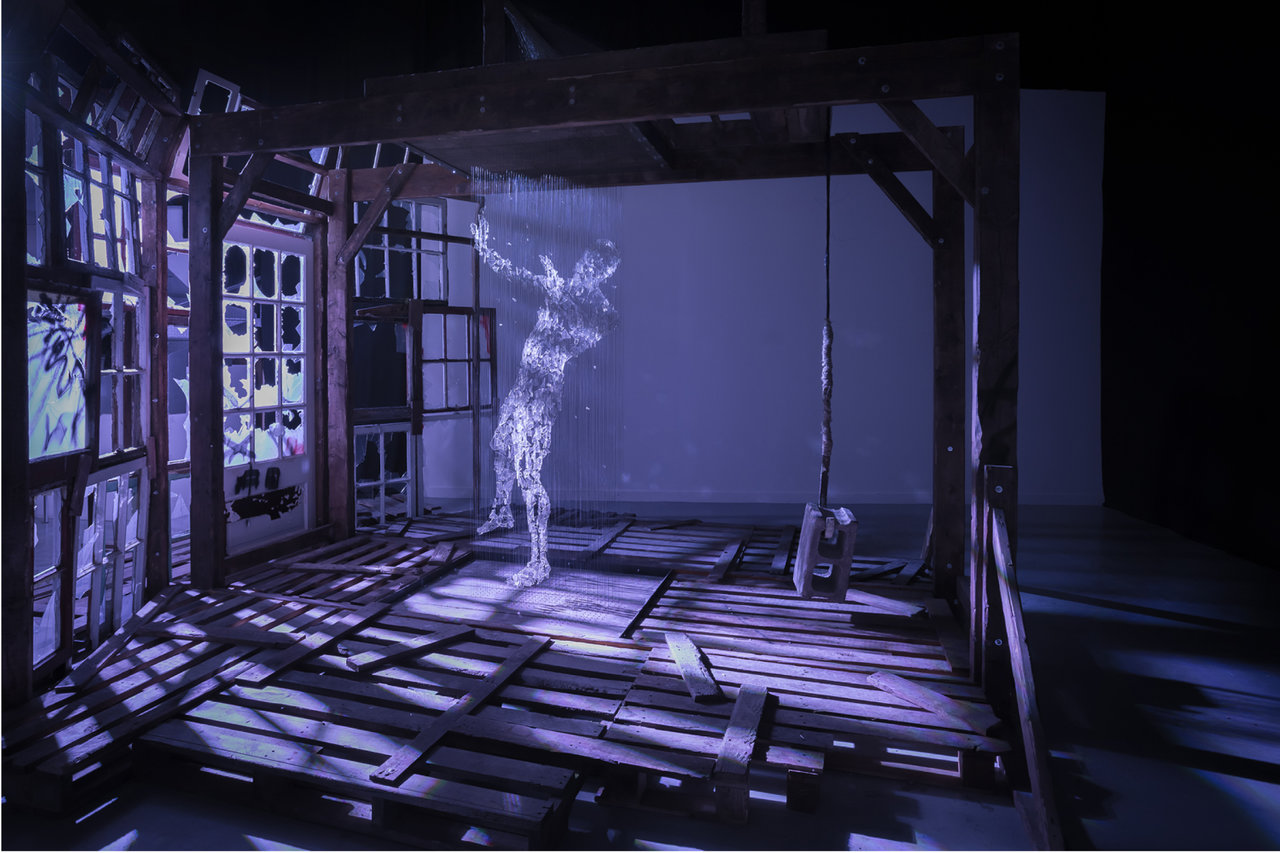 Randall Okita, Portrait as a Random Act of Violence, 2012, wood, glass, wire (detail). Photo: Dustin Rabin
Randall Okita, Portrait as a Random Act of Violence, 2012, wood, glass, wire (detail). Photo: Dustin Rabin
Portrait as a Random Act of Violence (2012) is the installation that we encounter when entering the gallery. Originally it was built for the short film Portrait as a Random Act of Violence. As the gallery’s introduction says, “Okita often employs complicated and intricately built artworks as key characters in his films, exposing their construction as a metaphor for the complexity of how conflict and struggles build within us.” The installation in the exhibition is the final scene of the film, when both the vandalized building and the glass sculpture are present at the same time, showing both the violence and its possible aftermath. This exhibition is meant to be a departure from performance art by removing the installation and sculpture from their original video screens and putting them in the gallery so they can stand by themselves, for themselves. And indeed Portrait as a Random Act of Violence is an outstanding installation in its own right, with a deep and intricate meaning that has many possible layers of understanding.
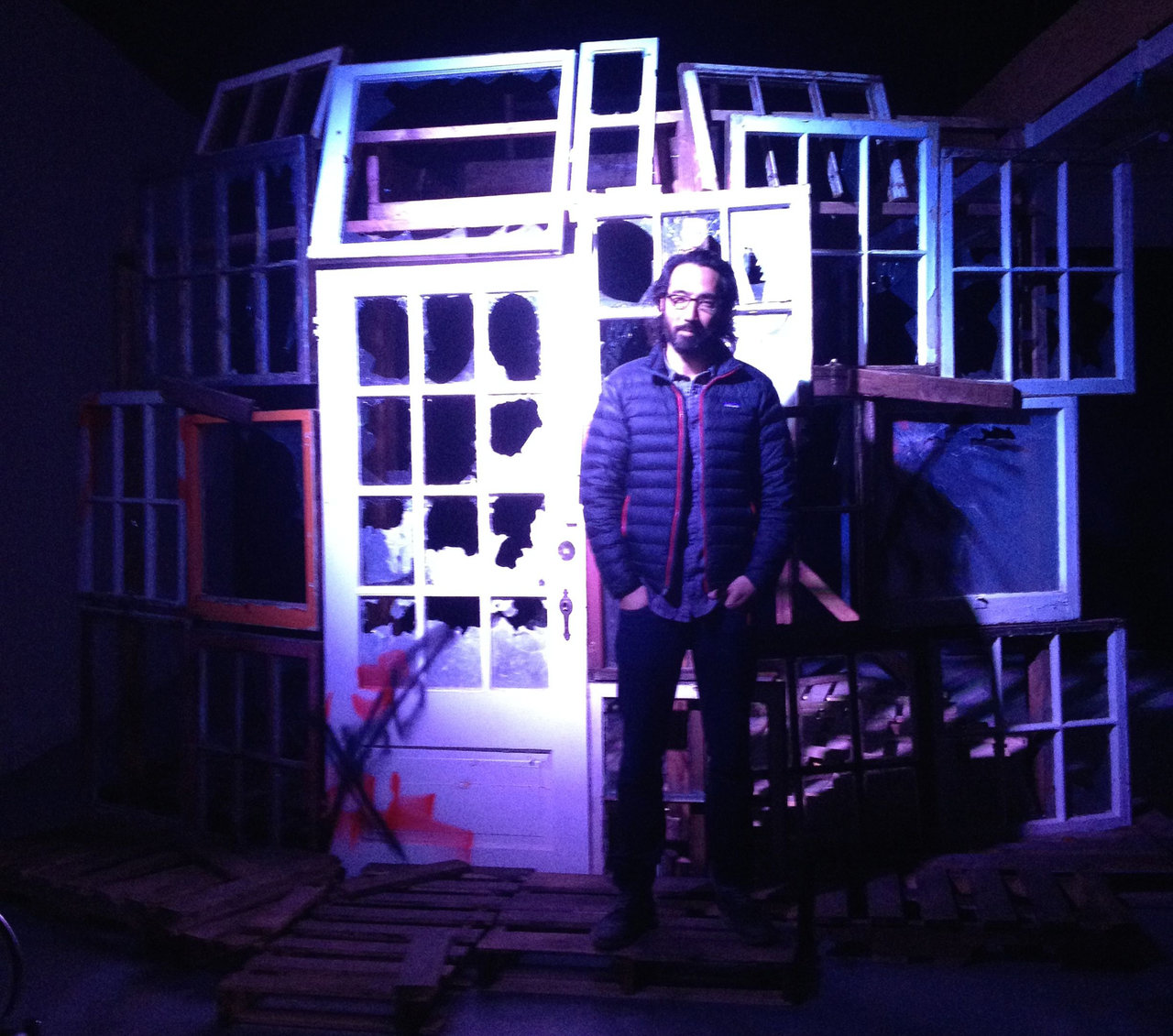 Randall Okita with Portrait as a Random Act of Violence. Photo courtesy of Robert Kananaj Gallery
Randall Okita with Portrait as a Random Act of Violence. Photo courtesy of Robert Kananaj Gallery
Entering, I step into a dark, gloomy place, facing a seemingly abandoned building that might have been a greenhouse but it is so badly vandalized that I take two steps back right away, not sure if I want to continue or if I even want to know more. All the windows are broken and the sizes and edges of the holes suggest that the damage was done with a large axe or stone block. It is definitely a dangerous place where violence took place. It is truly scary. When brave enough to walk around the building, I look inside – and see a miracle. A man made of the fallen, broken glass pieces stands in the middle. It is more than broken pieces of glass put together – it seems like crystallized humanity. It shines in the dark. It is in the void created by the violence but instead of falling into the abyss, it fills it with light. While the vandalized building stands as a metaphor for violence and the darkness within us, the figure brings in hope.
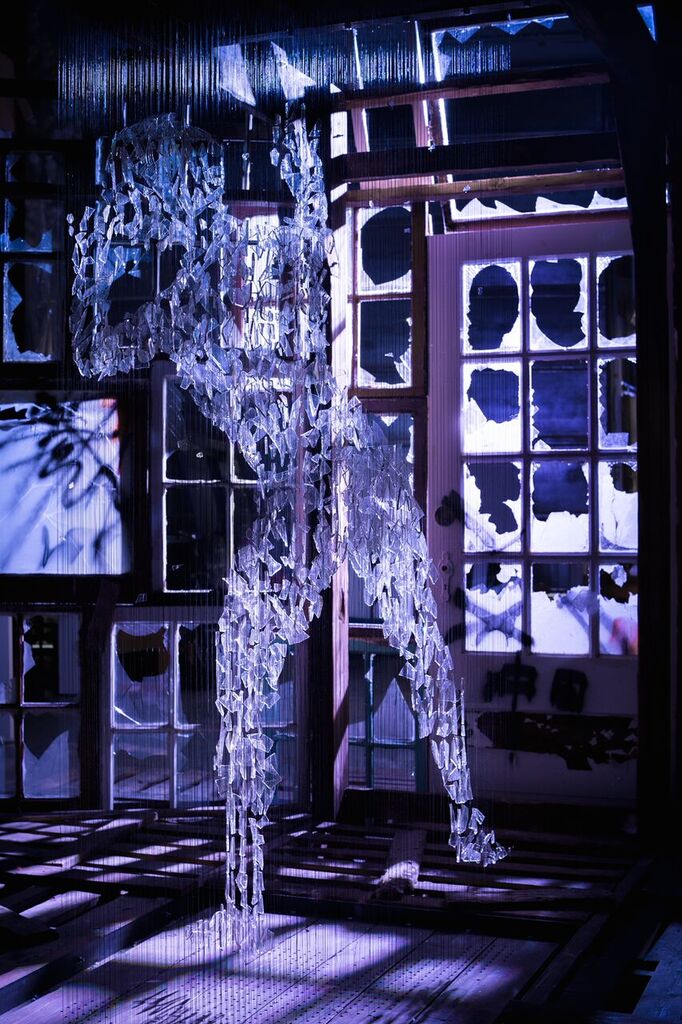 Randall Okita, Portrait as a Random Act of Violence, 2012, wood, glass, wire (detail). Photo: Dustin Rabin
Randall Okita, Portrait as a Random Act of Violence, 2012, wood, glass, wire (detail). Photo: Dustin Rabin
I understood this work better after watching the short film with the same title. The film is very fast and very loud at the beginning: a man stands in front of a building then smashes it ruthlessly, effectively, quickly. The destruction is drastic and dramatic. Then the same man steps into the building, hangs the cinder block he used to destroy it on a hook that starts a machine that pulls up the glass shards and gradually builds the figure. Could the perpetrator and the victim be the same person? Could it be different sides of the same character? Being made of glass suggests a fragile structure but this figure is more like crystal, strong and sharp. It is ambiguous in appearance, a disturbing mixture of vulnerability and strength. The posture — hands in front of the face, head turned away — is also ambiguous; is it trying to protect itself from another attack or is it in a martial arts pose, ready to fight fearlessly this time. The longer I looked at it the more I became enchanted by its inner light. Can violence be turned around and create something ethereal like this sculpture? I just hope that the cruelty of this building will not imprison it, that the humanity represented by it is uncontainable and that a resurrection will follow.
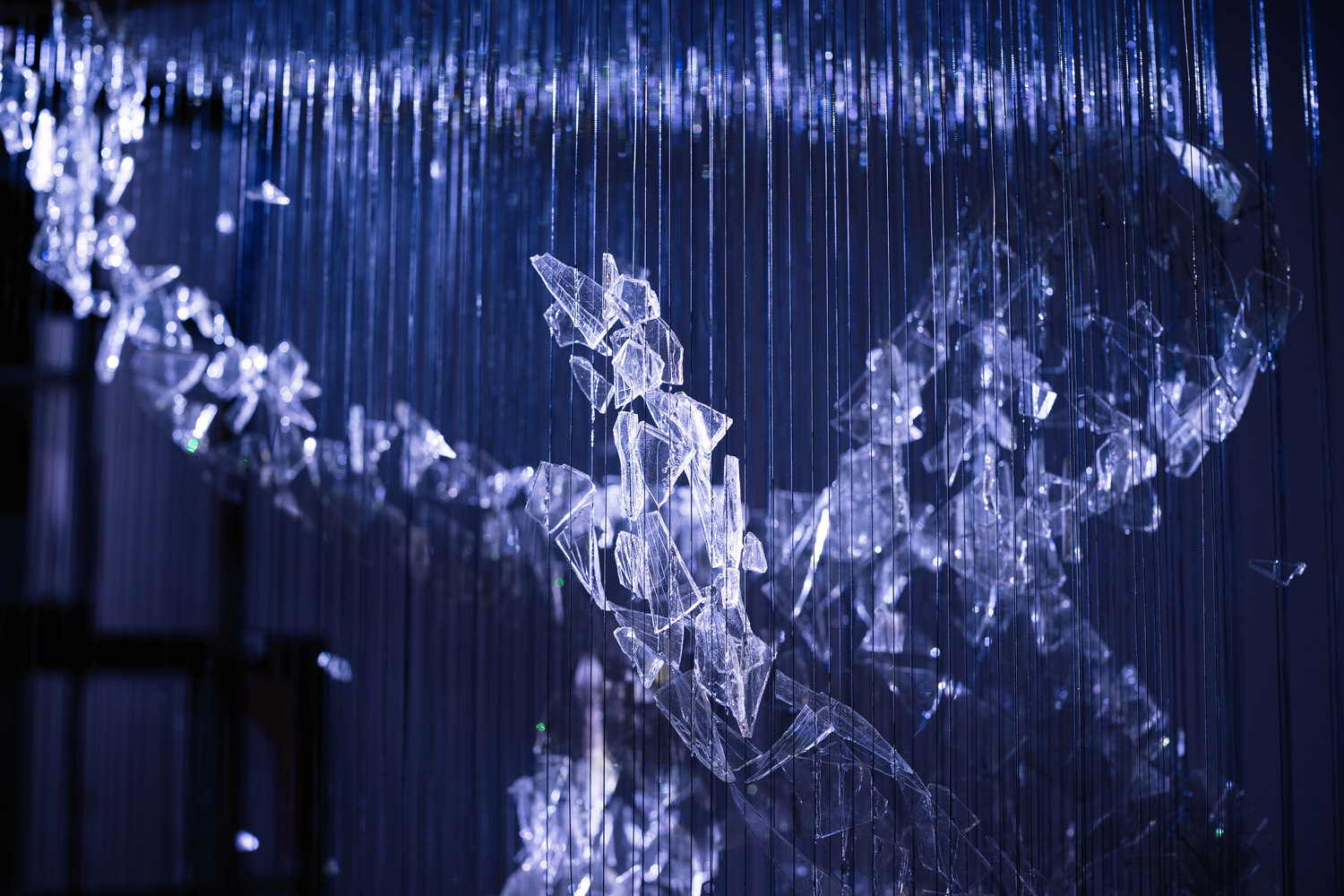 Randall Okita, Portrait as a Random Act of Violence, 2012, wood, glass, wire (detail). Photo: Dustin Rabin
Randall Okita, Portrait as a Random Act of Violence, 2012, wood, glass, wire (detail). Photo: Dustin Rabin
Things I Can’t Tell You (2011), a 25 minute video loop, is a visual poem of fire. Two figures wearing special clothes and lit on fire are engaged in a choreographed air ballet. Okita is one of them. The human shapes — that are not recognizable, but abstract — swim in the air towards each other. They start as little flames on opposite sides of the screen and begin their journey toward the centre. The intensity of the flames changes as well as the shape of the figures. Sometimes we can grasp a human form — a head, a body part, arms stroking in swimming motions, legs kicking — always surrounded and swallowed by fire. As they burn they feed your imagination with images. They look like calligraphy created by bleeding brushstrokes, dancing dragons breathing fire, shapes that might be associated with known forms and ones that can’t be recognized or even guessed. The shapes are like words that are better understood unspoken or impossible to say. The two figures move towards each other and appear to be going to meet. They get very close, almost there, when at the sound of a drum and after a moment’s hesitation, they turn away, or are pulled away, from each other. Then the distance between them widens, the fire weakens, and dies. Darkness takes over for a short time until two little flames reappear, getting stronger as they move towards each other again in their burning desire to meet, to touch – forever unfulfilled.
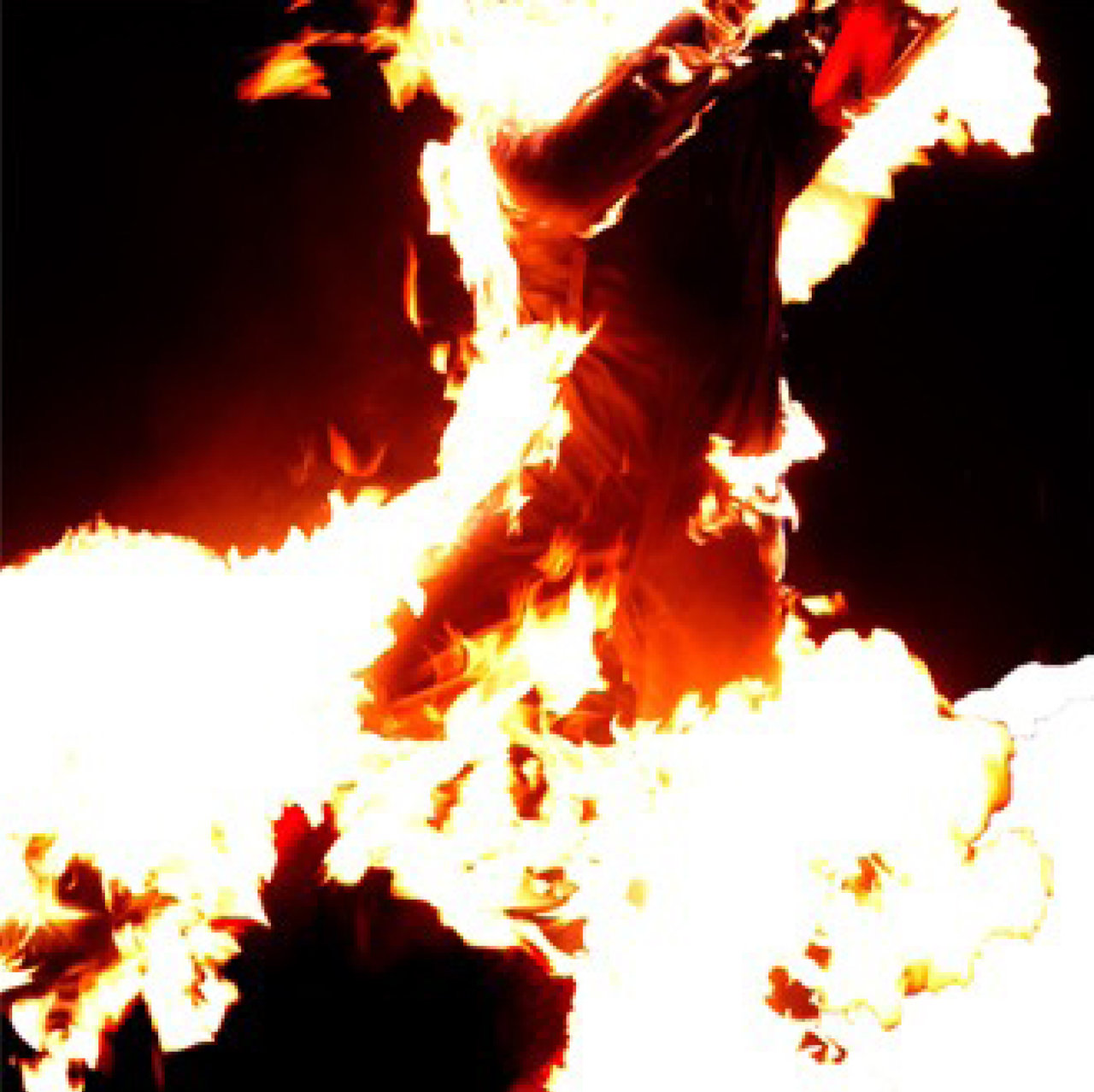 Randall Okita, Things I Can’t Tell You, 2011, video still. Photo: Dustin Rabin
Randall Okita, Things I Can’t Tell You, 2011, video still. Photo: Dustin Rabin
The flames fly like veils and remind me of the white draperies in Okita’s earlier film, Fish in the Barrel. Red or white, they both represent danger, and create high tension. They are disturbing. Strangely enough, fire feels less scary — Things I Can’t Tell You is more melancholy than dramatic. The dancing flames are so beautiful and mesmerizing that we forget to worry about the two people on fire. It feels that they are no longer people, and, through the metamorphosis of fire, their bodies have become spirits.
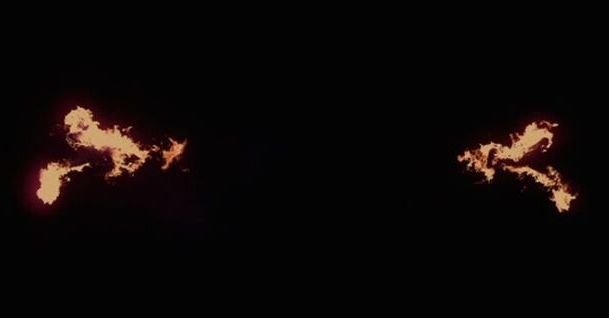 Randall Okita, Things I Can’t Tell You, 2011, video still. Photo: Dustin Rabin
Randall Okita, Things I Can’t Tell You, 2011, video still. Photo: Dustin Rabin
Through a spirit gate we walk into the next room into a realm of spirits and prayer. Be Here Now (2015) is like a Shinto temple or a cloud pavilion. At first the “building” seems to stand solidly on the ground, a large letter character painted by a wide brush, all lines. At a gong’s sound the color changes into imperial yellow, then as the clear outlines blur, the “temple” seems to move slightly, like breathing in and out. After another sound it turns into burning red, like the rising sun, and I can no longer see what is what but get lost in this mirage that feels highly spiritual.
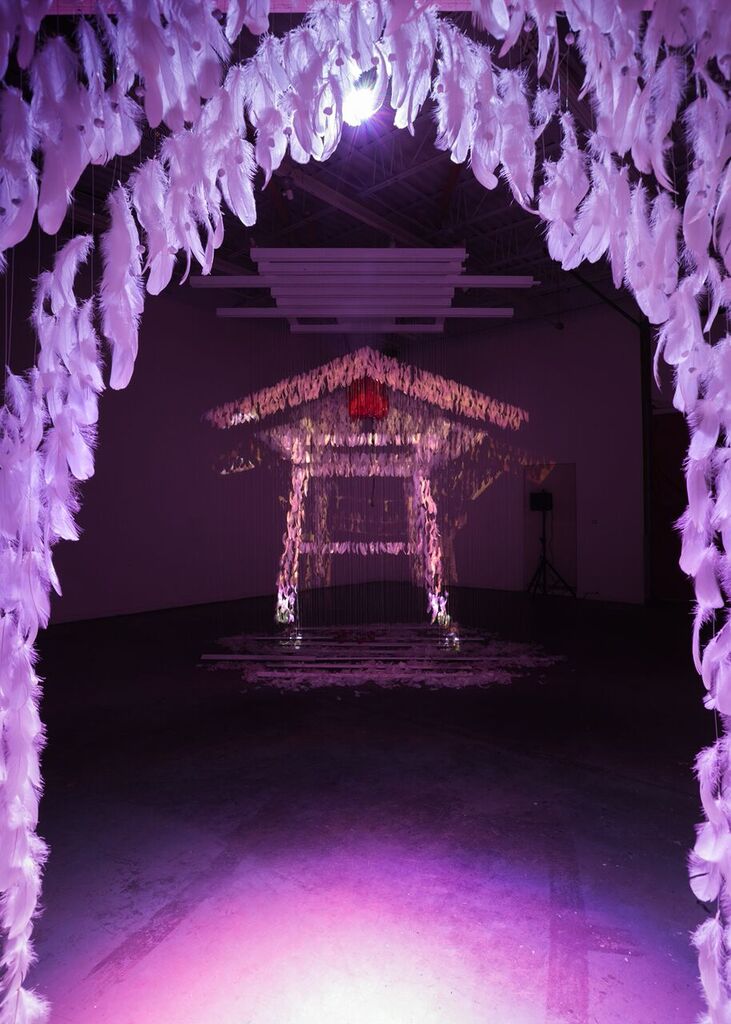 Randall Okita, Be Here Now, 2015, multi-media installation. Photo: Dustin Rabin
Randall Okita, Be Here Now, 2015, multi-media installation. Photo: Dustin Rabin
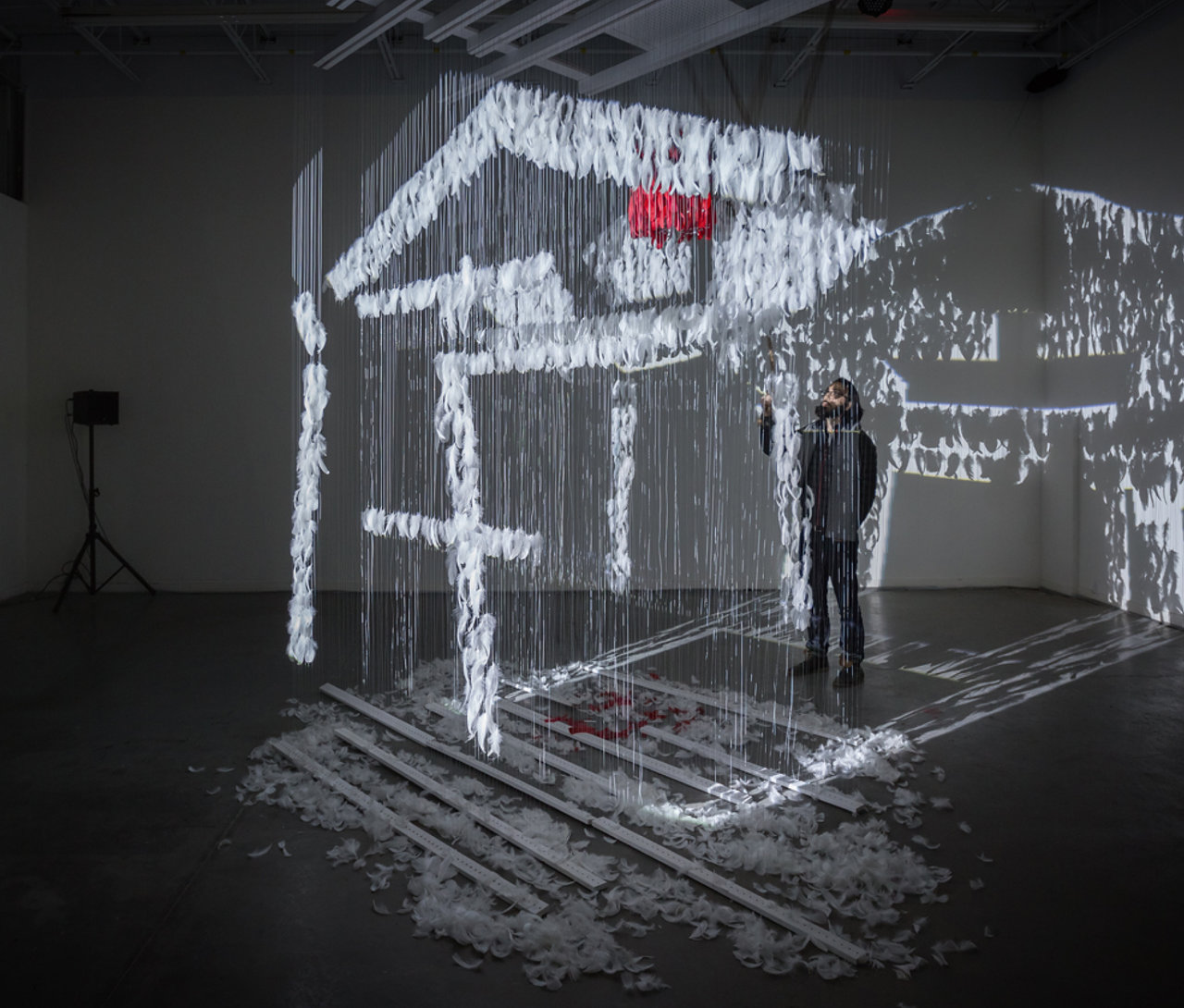 Randall Okita with Be Here Now, 2015, multi-media installation. Photo: Dustin Rabin
Randall Okita with Be Here Now, 2015, multi-media installation. Photo: Dustin Rabin
Shinto temples are final only in their form but not in their material. They are usually built of wood but that doesn’t last for long, so people have to rebuild them again and again, using the same design. In this installation, I stand in a temple created out of thousands and thousands of feathers. The feathers move, like the little paper prayer strips the Japanese put up around windows. It also reminds me of old shamans’ clothes and religions that worship tribal animals, birds among them. There is also an owl here somewhere up close to the ceiling. You can associate the moving feathers and the shadows they cast on the gallery’s walls with mythical animals, shape-shifters and other floating spirits. The projection of the different coloured lights alternates the outline and atmosphere of the temple and doesn’t really give you time to analyze its real nature. Finally, when alone in the room and the projection stops, I can walk around and see the hanging mallet. Each strike of the bell triggers a transformation: changing the light and sound, altering the disposition of the space and the viewers’ experience – making it all unique. Some say it is all illusion, just an optical trick. But what is illusion and what is spiritual vision and where is the borderline between them? It is up to the viewer to decide.
 Randall Okita, Be Here Now, 2015, multi-media installation, detail. Photo: Dustin Rabin
Randall Okita, Be Here Now, 2015, multi-media installation, detail. Photo: Dustin Rabin
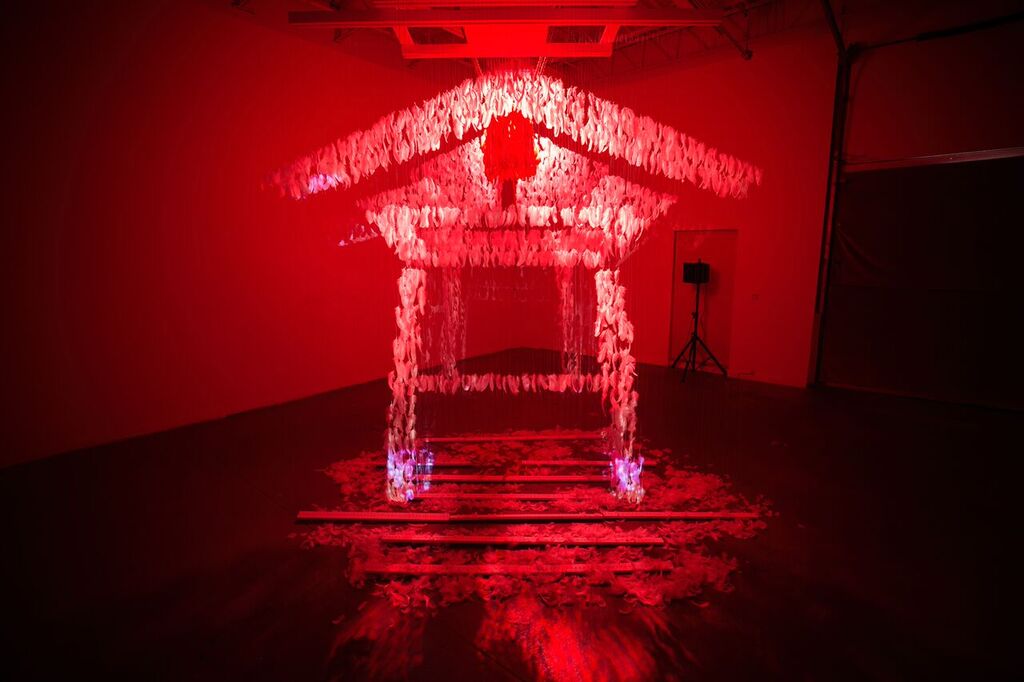 Randall Okita, Be Here Now, 2015, multi-media installation, detail. Photo: Dustin Rabin
Randall Okita, Be Here Now, 2015, multi-media installation, detail. Photo: Dustin Rabin
Okita said in one of his interviews that he aims to find a balance between reality and the internal metaphors that he wants to represent. As the works in this exhibition prove, that balance is hard to find and very sensitive. The visual concept in which Okita creates his characters and their environment is striking. As his friend, the writer Brendan McLeod wrote, Okita’s works are “hyper imaginative, dramatically potent, and visually arresting.”
Emese Krunák-Hajagos
*Exhibition information: November 7, 2015 – January 23, 2016, Robert Kananaj Gallery, 172 St Helens Avenue, Toronto. Gallery hours: Tue – Sat 11 a.m. – 6 p.m.
